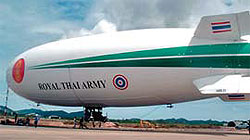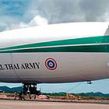
BRIEFS
Publication: Terrorism Monitor Volume: 8 Issue: 7
By:

AL-QAEDA VOWS TO BLOCK STRATEGIC AL-MANDAB STRAIT
Al-Qaeda has never attempted to seize and hold strategic territory, but this may be about to change, according to an audiotape message from the deputy leader of al-Qaeda in the Arabian Peninsula (AQAP). In the 12-minute statement, Sa’id al-Shihri (a.k.a. Sufyan al-Azidi) outlined a new strategy that would involve Islamist fighters from Somalia working in coordination with AQAP fighters in Yemen to secure both sides of the vital strait (al-Malahim Establishment for Media Production, February 8).
Some 30% of the world’s annual trade passes through the narrow Bab al-Mandab (“The Gate of Tears,” thanks to its navigational hazards). Passing Djibouti and Eritrea on the west and Yemen on the east, the strait connects the Indian Ocean to the Mediterranean via the Red Sea and the Suez Canal. Commercial ships entering or leaving the southern end of the Bab al-Mandab must already contend with pirate-plagued shipping lanes in the Gulf of Aden.
Al-Shihri suggested that controlling the Bab al-Mandab and bringing it “back under the protection of Islam” would “create a great victory and international power for us… Then the strait will be closed and the grip will be tightened around the throat of the Jews, because the U.S. supports them through [the strait], by means of the Red Sea in particular.” Al-Shihri claims “the Jews” are mobilizing their agents to oppose this, especially those in the “agent governments” of Egypt and Saudi Arabia. Al-Shihri mentions in particular Egypt’s Lieutenant General Omar Sulayman, the director of the Gihaz al-Mukhabarat al-Amma (Egyptian General Intelligence Services) since 1993.
Following the offer of Somalia’s al-Shabaab Islamist movement to send fighters to join AQAP in Yemen, al-Shihri praises his “great brothers in Somalia” and says they will operate on two fronts in the upcoming battle with the United States. “You and we are standing on the two banks of the Bab al-Mandab… We shall expel our enemies. We should complete each other in our war against our enemies, until God grants us victory or martyrdom, God willing.”
Elements of the Arab press quickly pointed out that al-Qaeda’s ambition may be beyond its reach. “Control of the Bab al-Mandab might not be easy, especially as it does not possess heavy weapons and modern boats that can be used for this purpose, but this does not mean it does not possess the logistical capabilities that can disrupt navigation in this vital international passageway” (al-Quds al-Arabi, February 9). Nevertheless, Yemeni government officials said all such threats were taken seriously (al-Hayat, February 9; 26Sep.net [Yemen Defense Ministry], February 10).
Somalia’s Minister of Information, Dahir Mahmud Gelle, urged the international community to take steps to eliminate AQAP and al-Shabaab to avert the risk to the global economy posed by a seizure of Bab al-Mandab (Radio Gaalkacyo, February 10).
THAI ARMY READIES CONTROVERSIAL AIRSHIP FOR USE AGAINST ISLAMIST INSURGENTS
Amid rumors that the program has been grounded, the Royal Thai Army maintains it is in the last stages of preparing a controversial U.S.-built manned airship for deployment in the military’s struggle against Islamist separatists active in southern Thailand.
The Thai military has been heavily criticized recently by those who allege the armed forces have gone on a spending spree, buying expensive but unproven and potentially useless technology as the nation tries to recover from a financial crisis. Many Thai analysts wonder whether the same amount of investment in human assets or less mobile but cheaper ground surveillance systems would not realize similar results. Even one of the airship’s operational support team questioned the airship’s usefulness on two grounds: the heavily forested terrain of south Thailand differs greatly from places where balloon surveillance is currently used, such as the deserts of Iraq and Afghanistan; secondly, the insurgents specialize in hit-and-run attacks and do not converge in large groups long enough to be noticed by an airship (The Nation [Bangkok], February 4).
The Aeros 40D S/N 21 (Sky Dragon) is made by California-based Worldwide Aeros. Nearly 50 meters long, the Sky Dragon has an operational range of 560 km, a ceiling of 10,000 feet and can travel at a maximum speed of 88 kph.
The airship was procured through a contract with a U.S. defense industry middleman, Aria International. Allegations of corruption in the procurement process were cited as one of the reasons behind demonstrations by the red-shirted United Front for Democracy against Dictatorship (UFDD) opposition movement at Royal Thai Army headquarters (Thailand News Agency, January 20). The charges were refuted by Aria VP Art Sullivan. “To be specific and blunt, Aria has never paid anyone to gain or retain this contract.” Defending the airship against allegations it could be easily shot down by small-arms fire, Sullivan stated. “In fact, you could put 20 bullet holes in this airship and it would still continue to fly. Nonetheless, we operate the airship at a safe altitude above the range of small arms.” Sullivan also challenged exaggerated cost figures that appeared in the Thai media, insisting the contract was for a fixed $9.7 million (Letter to the Editor, The Nation, February 8).
The procurement controversy is part of larger public criticism of wasteful defense spending on a bloated defense establishment that has been slow to follow the “leaner and meaner” trend of other militaries (The Nation [Bangkok], February 5). Initially, it was planned to purchase two of the airships, though the acquisition of another airship now looks unlikely in light of the procurement controversy.
Delays in the program were attributed to problems in obtaining a U.S. release for the technology used in the airship’s complex camera system (worth more than the rest of the airship and its support system). The high-definition, thermal-detecting surveillance cameras can record images night or day, in any kind of weather.
Once deployed, the airship system (described by Aria as a “surveillance programme, not an airship programme”) will be operated by 55 officers and NCOs distributed between command, air, ground and support operations. Airship operations will be supported by three HU-1H helicopters, one in each of the southern provinces of Narathiwat, Yala and Pattani. On the ground, a 22-ton Grizzly Armored Personnel Carrier acts as a mobile command-and-control vehicle. The airship also requires the construction of a hangar and support facility in Pattani province.
The U.S. military has deployed cable-tethered blimps – aerostats – as part of its RAID (Rapid Aerostat Initial Deployment) surveillance system in Iraq and Afghanistan (Defense Industry Daily, July 18, 2009). Though the aerostats use low-pressure gas to prevent being brought down by a single bullet-hole, insurgents have discovered that if you put enough bullet-holes in an aerostat, it needs to be brought down for maintenance. In many cases this has reduced a projected 30-day aerostat deployment to a length of only several days.
Though their effectiveness in South Thailand is yet unproven, airships may soon play an important role on the modern battlefield. The U.S. Defense Advanced Research Projects Agency (DARPA) and the U.S. Air Force have plans to launch a massive unmanned military airship capable of flying a ten-year mission at 70,000 feet. Dubbed ISIS (Integrated Sensor Is Structure), the airship will be 1,000 feet in length, with two enormous radar antennas integrated into the framework of the airship and an advanced radar system designed by Raytheon. According to DARPA, “ISIS will revolutionize theater-wide surveillance, tracking and fire control" (Defense News, May 11, 2009). A prototype built by Lockheed is scheduled to make its first flight in 2013.





